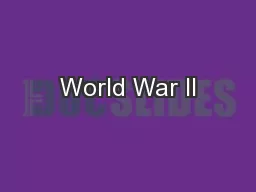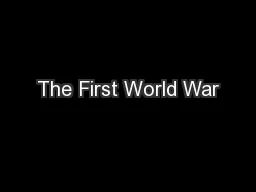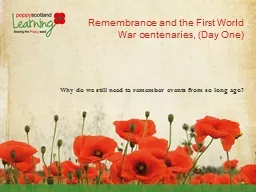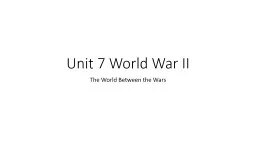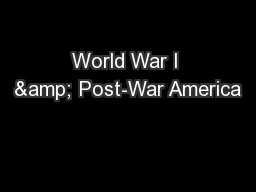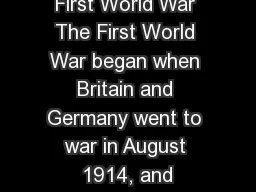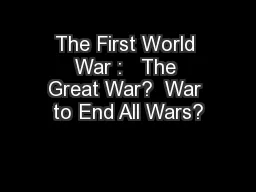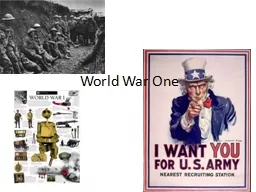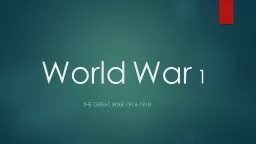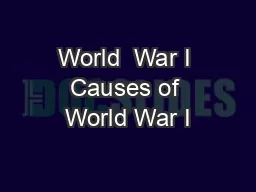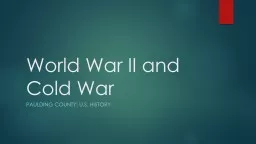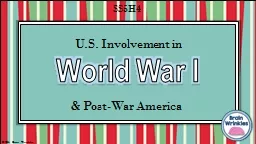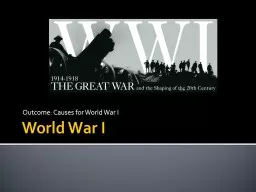PPT-World War II
Author : tatiana-dople | Published Date : 2018-01-04
Rise of Dictators Stalins Soviet Union Economic Plans Huge collective farms Starvation amp rationing Pushed industrialization more Reign of Terror Purges removed
Presentation Embed Code
Download Presentation
Download Presentation The PPT/PDF document "World War II" is the property of its rightful owner. Permission is granted to download and print the materials on this website for personal, non-commercial use only, and to display it on your personal computer provided you do not modify the materials and that you retain all copyright notices contained in the materials. By downloading content from our website, you accept the terms of this agreement.
World War II: Transcript
Rise of Dictators Stalins Soviet Union Economic Plans Huge collective farms Starvation amp rationing Pushed industrialization more Reign of Terror Purges removed enemies amp undesirables. (Note: “World War I” is an American term. The correct terminology in Canada [and Britain] is “The First World War”). The Old World Order. In 1914, the world was dominated by imperialist empires. Almost all of these empires were based in Europe. As a result, empires like the British, German, French, Italian, Austro-Hungarian, Russian and Ottoman were in constant competition, particularly in Africa.. This is the single most important event of the 20. th. Century.. World History will forever change due to this war.. The World is not settled following World War I.. Many issues of the First World War remain unsolved. McIntyre. Boys and Girls! War Savings Stamps Poster by James Montgomery Flagg 1917-18. 2. The First World War:. War involving nearly all the nations of the world. 1914-1918. What?. . When?. . 1st World War in history. centenaries, (Day One). Why do we still need to remember events from so long ago?. Remembrance and the First World War. This is a poppy. Aren’t poppies beautiful. ?. Usually good things like flowers make us feel happy.. Text . Important changes took place in the 20 years between the two . world wars (1919-1939). Title. What was Europe like after World War I ? . Text . Important changes took place in the 20 years between the two . SS5H4. U.S. Involvement in. Standards. SS5H4 Describe the U.S. involvement in World War I and post-World War I. . a. Explain how German attacks on U.S. shipping during the war in Europe (1914- 1917) ultimately led the U.S. to join the fight against Germany; include the sinking of the Lusitania and concerns over safety of U.S. ships, U.S. contributions to the war, and the impact of the Treaty of Versailles in 1919. . First . World War 1914–18. Australian troops in the Turkish Lone Pine . trenches.. Australia's . early involvement in the Great War included the Australian Naval and Military Expeditionary Force landing at . Chapters 22-25 . History Alive!. , Ch. 11 . Americans. History Alive!. . Ch. . 22: From Neutrality to War . p. . 283-291. “Was it in the national interest of the US to stay neutral or declare war in 1917?”. Causes of WWI. Imperialism. Nationalism. Alliance System. Militarism. Start of World War One. The southeastern region of Europe was known as a “powder keg” . Many national groups in the region tried to break free from Austria-Hungary. The Great War: World War I. The War to End All Wars. “. The lamps have gone out all over Europe and we shall not see them lit again in our lifetime.. ”. . - British Prime Minister Lord Grey. Traditional European . World War I. Nationalism. Militarism. Imperialism. Alliance . Systems. Nationalism. A devotion to the interests and culture of one’s nation. . Leads to rivalries among countries. Many ethnic groups are fighting for independence from larger countries.. World War II and Cold War Paulding County : U.S. History Standards SSUSH19 Examine the origins, major developments, and the domestic impact of World War II, including the growth of the federal government. World War I & Post-War America © 2014 Brain Wrinkles SS5H4 U.S. Involvement in Standards SS5H4 The student will describe U.S. involvement in World War I and post-World War I America. a. Explain how German attacks on U.S. shipping during the war in Europe (1914- 1917) ultimately led the U.S. to join the fight against Germany; include the sinking of the Lusitania and concerns over safety of U.S. ships, U.S. contributions to the war, and the impact of the Treaty of Versailles in 1919. Underlying causes. What causes most wars. Extreme . nationalism. (“Super Patriotism” or love for one’s country). Imperialism: . Spreading the political or economic control of one country over another.
Download Rules Of Document
"World War II"The content belongs to its owner. You may download and print it for personal use, without modification, and keep all copyright notices. By downloading, you agree to these terms.
Related Documents

